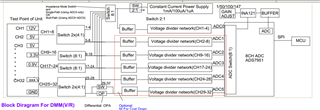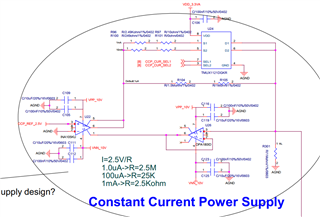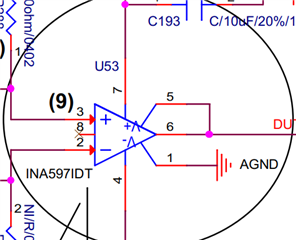Other Parts Discussed in Thread: OPA180, INA597
Hi Ti
Could you help to check the DMM design for us?

1.Constant Current Power design:U22 INA105KU+ U26 OPA180ID
MCU control Switch and change output current,Could you help to check the design?
I=1uA ~10mA.
Mark Question 1 in the attachment(Q1).

2. Buffer:U30 OPA180ID
Just use it as a buffer.
Mark Question 2 in attachment.(Q2).

3. Differential Amplifier U53 INA597IDT Setting
5 Case:
Case1: 10 V Input,+10V to Pin3("+"),Pin2("-") connect to GND ,V+=+10V, V- = -10V,So ouput is +5V
Case2: 10 V Input,+10V to Pin3("+"),Pin2("-") connect to GND ,V+=+10V, V- =GND,So ouput is +5V
Case3: -10 V Input,-10V to Pin2("-"),Pin2("+") connect to GND ,V+=GND, V- = -10V,So ouput is +5V
Case5: +/-10 V Differential Voltage ,+10V to Pin3("+"), -10V to Pin2("-") V+=+10V, V- =-10V,So ouput is +10V

Mark Question 3 in attachment.(Q3).
4. ADC GAIN Design: U18 INA121U +U19 OPA365AID
Mark Question 4 in attachment.(Q4).

